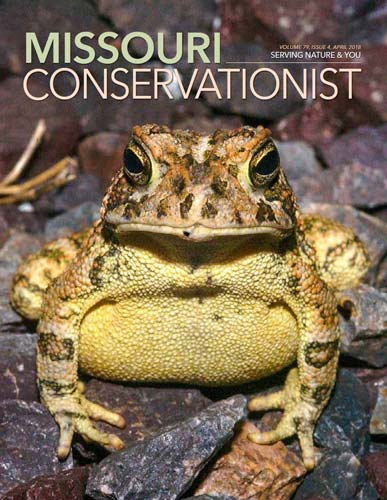Building with nature is becoming an important part of urban planning.
It’s 5:15 p.m. on a Wednesday, and Springfield’s Martin Luther King Jr. Bridge depicts a tale of two cities.
The pulsating swoosh of vehicles passing across the bridge is the tempo of an urban rush hour going smoothly. It’s an auditory narrative of a thriving midtown economy.
Beneath the bridge, a different story of city life is portrayed. Here, the bridge supports trees, not traffic. Users of the greenways trail that passes beneath the bridge can get a wealth of forest facts from a Tree City USA mural that adorns the bridge’s abutments.
The artwork, which is a cooperative effort of civic and state organizations, has information on the functions and features of trees growing in and around Springfield. Adjacent to the bridge — and, no doubt, garnering newfound respect each time a passerby reads the mural — is an array of trees planted along the trail.
A concrete underbelly of a downtown bridge may seem like an unusual place to read about natural resource stewardship, but using routes to talk about roots is one example of how a growing number of resource experts, architects, developers, city planners, and residents are making conservation a part of life in the city. Communities across the state are realizing the same conservation practices that help the state’s forests, prairies, and streams thrive also have a place in urban areas.
Conservation Heads Uptown and All Over Town
“Today we are learning how to interweave nature throughout our cities,” said Ronda Burnett, a community conservation planner for the Missouri Department of Conservation in Springfield. “Community conservation matters to the citizens of Missouri because it is a way to preserve our sense of place and our cultural heritage. It helps us to understand the natural world in which we live and to connect to nature in ways that make us healthy and happier.”
The Martin Luther King Jr. Bridge’s tree information is an example of promoting resource stewardship in an urban setting, but community conservation consists of more than informational signage and decorative plantings. Incorporating natural features and native habitats into a site’s design through the use of vegetated swales (small depression planted with native plants), rain gardens, green roofs, tree shelter belts, wetlands, pervious (porous) pavement, and other low-impact development (LID) practices can provide economic and safety advantages as well as conservation benefits. Statewide examples show how.
In Springfield, a system of microdetention basins (wide, shallow, vegetated basins) on the grounds of the Brentwood Library improves water quality by filtering out pollutants carried in runoff from the roof and parking lot. It also benefits nearby drivers and residents by reducing the amount of water that drains onto adjacent streets following heavy rains.
At the corporate headquarters of Alberici Constructors Inc., a construction firm based in St. Louis, extensive use of native plants on the site eliminates the need for an irrigation system. A catchment system consisting of two retention ponds collects rainwater from the garage roof area. This rainwater is stored in a cistern, treated, and then used for sewage conveyance, saving nearly 150,000 gallons per year. The site’s constructed wetland and prairie-style landscaping has kept paving to a minimum and has reduced the “heat island” factor. Heat islands form in urban areas where large paved areas absorb and retain heat from the sun. These areas increase energy costs and contribute to heat-related illnesses.
Helping Humans and Habitats
“Community conservation practices are becoming more common in cities because they are now better understood and viewed as viable options for achieving project goals,” Burnett said. “The marketplace is supplying the products needed for these practices and the incentives, via green certification programs, to construct them. Professionals are now trained to design and specify these practices, and facility and grounds managers are learning about their long-term maintenance needs. Everyone is becoming more aware of the benefits of community conservation practices.”
As more architects, engineers, and city governments realize there’s a need for nature in urban development, MDC staff has played increasingly important roles in communities around the state.
“Planning, design, and development professionals, many of whom were educated out of state, benefit from technical assistance offered by the Missouri Department of Conservation,” Burnett said. “They come to us to better understand local wildlife, which native plants will provide the functions needed for green infrastructure systems to work as intended, and how people benefit from nature. Department staff are able to provide site-specific information about natural resources that help make the integration of nature into cities a successful endeavor.”
Some of community conservation’s benefits don’t show up as figures on a spreadsheet or numbers on a construction budget, but they’re just as important.
“Community conservation also provides health benefits,” said Carrie Lamb, the water quality coordinator for the City of Springfield. “I think most people would agree that it is more pleasant to walk down a tree-lined street than one with no trees. More and more studies show that trees, views of nature, and access to nature in our daily lives reduce stress and crime, provide a better work environment, and even help people heal faster from illness.”
And, of course, community conservation efforts provide habitat benefits.
“Even though urban wildlife habitats tend to be relatively small, they still contribute to natural diversity and provide considerable wildlife benefit,” said Josh Ward, MDC community conservation planner in St. Louis. “For example, researchers are finding that native bee abundance and diversity in urban areas like St. Louis is comparable to that of other high-quality Missouri habitats.
“Think of it as providing habitat for wildlife and people,” Ward continued. “Improving wildlife habitat is the main component, but community conservation is also about people. A benefit of providing public access to urban wildlife habitat is to provide educational opportunities to a larger audience.”
Slower, Safer, Cooler Flows
An example of the benefits habitat can provide in an urban setting can be found in the City of Columbia’s Median and Roundabout Native Habitat Project.
In an effort to create more productive green spaces, the Columbia Public Works Department, Office of Neighborhood Services, and the Sustainability Office have partnered to design and implement native plantings at selected medians and roundabouts across the city. In addition to providing habitat for butterflies and other pollinating insects, these medians will better serve people, too. Studies have shown that these types of areas vegetated with native plants tend to slow the traffic, which makes the area safer, and they also increase the property values of neighboring buildings. Native plantings also reduce drivers’ fatigue, anger, and stress. On top of that, maintenance costs are reduced because they don’t have to be mowed.
An MDC-assisted refurbishing of Springfield’s Government Plaza, completed in 2015, is an example of how construction and conservation can go hand in hand. When the complex’s parking lots were built decades earlier, the design was typical of that era’s prevailing function of paved areas — to move water off the site as quickly as possible. However, the problems associated with fast water runoff provided clear signs there had to be a better way to build a parking lot. In particular, flooding washes pollutants into nearby streams. In hot weather, rainwater warmed by hot pavement flows into streams, killing fish, and degrading habitat. The reconstruction of the parking areas featured pervious pavement, rain gardens, and bioswales planted with natives. Together, these features capture a portion of the rainfall through infiltration. This reduces the runoff volume and associated pollution into nearby Jordan Creek, a stream that carries water through the center of the city into Wilson’s Creek, then into the James River and, ultimately, into Table Rock Lake. The project will also feature signage to help educate the public and professionals who visit the city offices to procure permits for construction and development projects.
Science and Economics
Besides adhering to smart biological principles, incorporating conservation practices into the design of streets, buildings, and business districts is making good use of another science architects and engineers rely on — physics.
“Let’s take water, for instance,” Burnett says. “The rougher the surface that runoff flows over, the slower it will travel. This is due to the coefficient of the friction provided by the surface. Gravel has a higher coefficient of friction than concrete, and tall native vegetation has a higher coefficient of friction than mowed grass.”
Lamb said that conservation-friendly construction was once viewed as having a higher price tag, but that perception is changing.
“It may not be true for every site, butthere are more and more examples andstudies showing that LID methods can actually be cheaper than conventional development practices,” Lamb said. “If the environmental costs were factored in, that would definitely make LID a more cost-effective option. There are economic tools available to architects and designers that can be used to measure the environmental costs and benefits to help make a true comparison.” When it comes to community conservation, the best economic tool a developer can use is advanced planning.
“The environmentally friendly method of site development often requires more preconstruction planning for something like a heavily treed piece of property,” said MDC Community Forester Cindy Garner. “But if the planning process involves the saving of trees from the very beginning — just as, say, the planning of a utility hookup to a site is something that’s considered from the outset — then these methods (conservation-friendly development) can occur just as easily and inexpensively. Decisions made on paper will always be cheaper than when the equipment is moving.”
Connecting Citizens to Nature
Spreading the conservation message to citizens is an important part of community conservation. Whether it’s a mural about trees in downtown Springfield or a sign promoting native-plant landscapes in Columbia, it’s important that urban conservation efforts deliver a take-home message.
“Education and outreach is an important part of community conservation,” Ward said. “Many of our projects include an interpretive sign to help the public understand what we are doing and why we are doing it. We hope that these efforts are helping us inform and educate people to promote conservation stewardship now and into the future.”
“Community conservation is all about people and their needs,” said Jason Jenson, MDC Private Land Services Chief for the Ozarks. “After understanding the needs of citizens in our urban areas, we find ways to meet those needs by applying conservation practices. Connecting Missouri’s citizens to nature helps meet social, economic, and environmental needs.”
Habitat stewardship and economic benefits are key components of community conservation, but perhaps the practice’s most important take-away message for professionals and citizens is connectivity.
“Community conservation matters because it affects our quality of life,” Lamb said. “Humans are a part of, and not separate from, the environment.”
Learn More About Building With Nature
MDC employs three community conservationists in urban areas around the state. They can help civic leaders and planners use green infrastructure to solve problems, save money, and improve life for people and nature.
- In Springfield, call Ronda Burnett at 417-836-8407.
- In St. Louis, call Josh Ward at 314-301-1506, ext. 4213.
- In Kansas City, call Stephen Van Rhein at 816-759-7305, ext. 1128.
For information about community grants, responsible construction, and other urban land-management topics, visit MDC’s Your Property webpage at mdc.mo.gov/property.


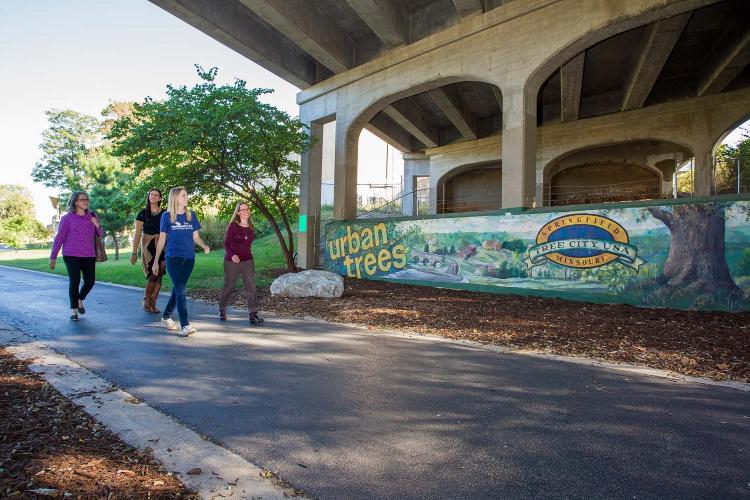
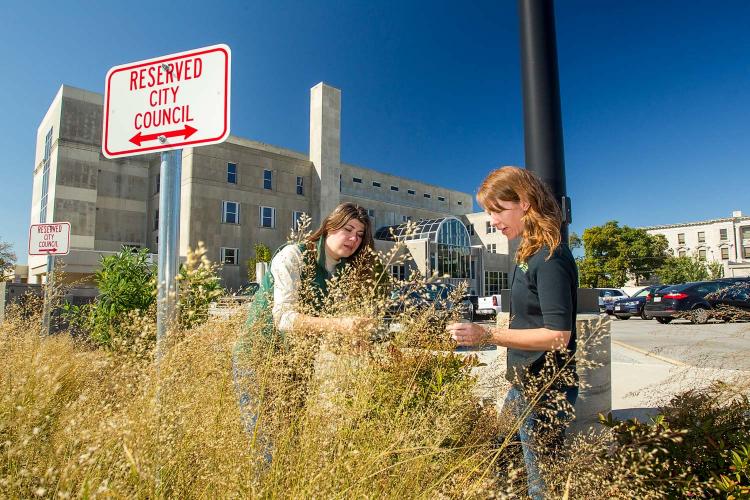




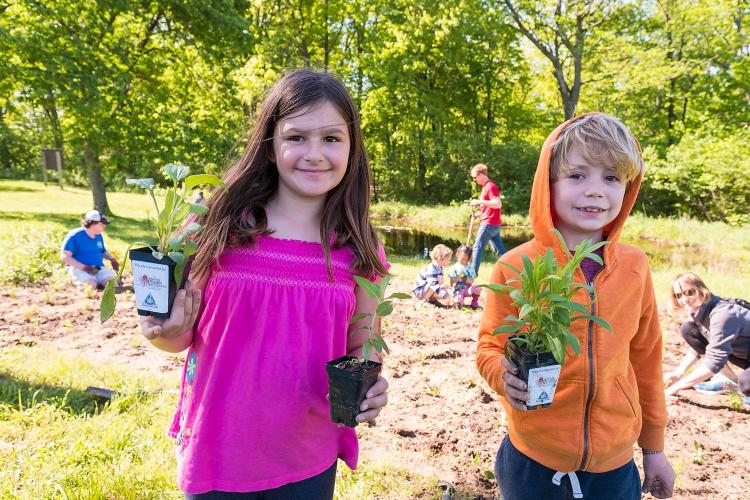



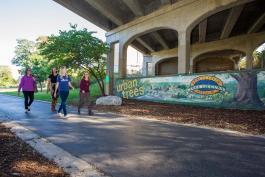

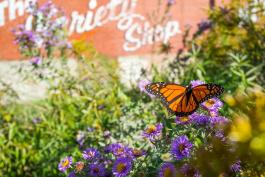
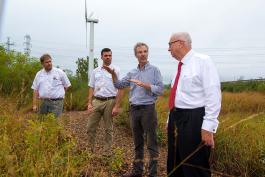
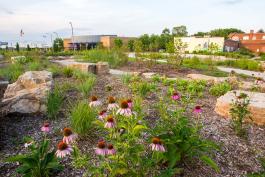


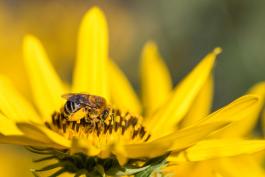
Also In This Issue


And More...
This Issue's Staff
Associate Editor - Bonnie Chasteen
Staff Writer - Larry Archer
Staff Writer - Heather Feeler
Staff Writer - Kristie Hilgedick
Staff Writer - Joe Jerek
Creative Director - Stephanie Thurber
Art Director - Cliff White
Designer - Les Fortenberry
Designer - Marci Porter
Photographer - Noppadol Paothong
Photographer - David Stonner
Circulation - Laura Scheuler






















